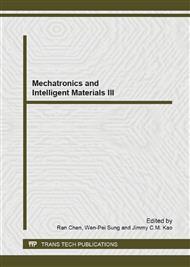p.1759
p.1763
p.1769
p.1774
p.1778
p.1782
p.1786
p.1790
p.1795
Design and Analysis of Bicycle Helmet with Impaxx Foam Liner
Abstract:
Currently, expended polystyrene (EPS) are widely used as liner material in bicycle helmet. Due to its characteristics is excellent performance, lightweight, low cost of manufacturing. However, EPS has some disadvantage as difficulty to optimize energy absorbing in different areas of head and inferior effect of heat dissipation and a brittle characteristic. This study focuses on to find a replacement material for EPS foam to improve liner of bicycle helmet. Impaxx energy absorbing (EA) foams present strong potential in overcoming such problems of EPS foam. To make certain that all bicycle helmets reach efficiency, the helmets are required to pass shock absorption test of EN1078 standard. This study performs finite element analyses of helmet impact tests using LS-DYNA software. Simulation results indicate Impaxx foams are suitable for shock absorption test according to the EN1078 standard. Therefore these results encouraged the authors to extend the manufacturing work to cover the creating helmet design and performance experimental tests.
Info:
Periodical:
Pages:
1778-1781
Citation:
Online since:
June 2013
Authors:
Keywords:
Price:
Сopyright:
© 2013 Trans Tech Publications Ltd. All Rights Reserved
Share:
Citation:


